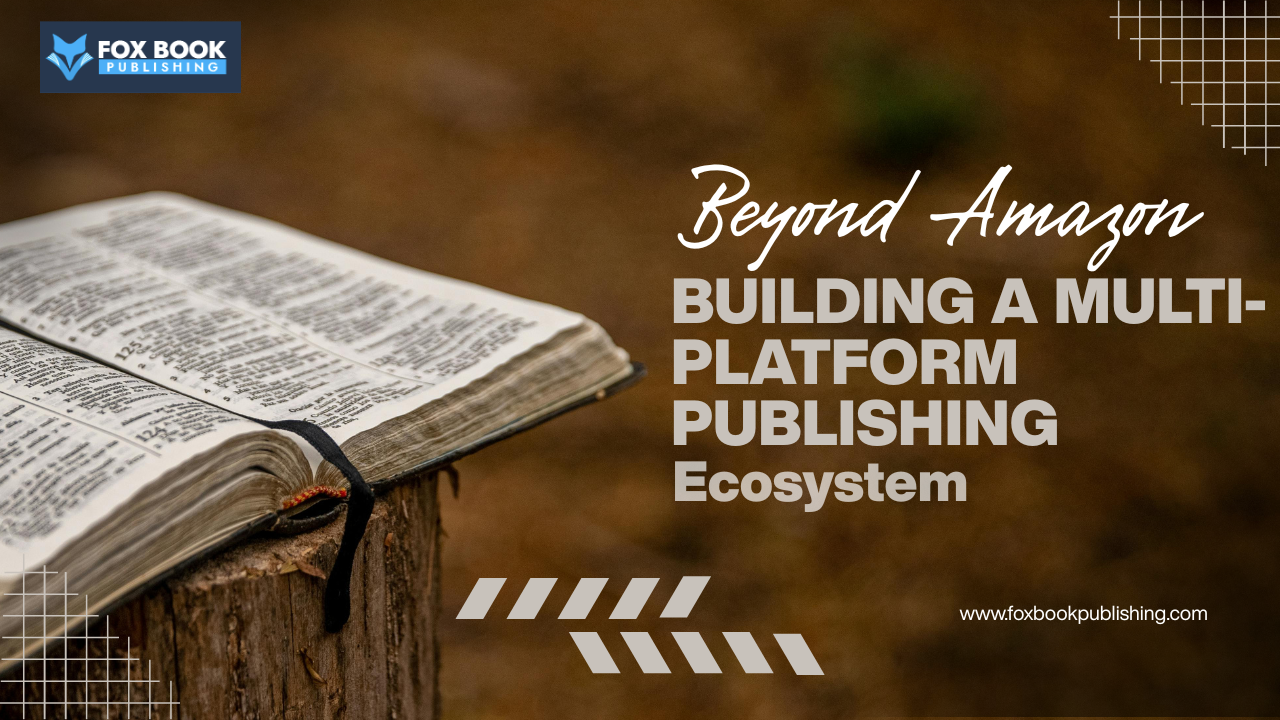Amazon built the modern self-publishing revolution. But dependence on any single platform limits control.
True independence means reaching readers wherever they prefer to buy, read, or listen — without letting one algorithm define your career.
1 The Hidden Risk of Single-Platform Success
Many authors see stable Amazon sales as security. It’s actually fragility.
One policy change, algorithm tweak, or account suspension can erase years of work. The goal isn’t to abandon Amazon, but to build redundancy.
2 Understanding the “Wide” Strategy
“Going wide” means distributing across multiple retailers — IngramSpark, Draft2Digital, Google Play, Apple Books, Kobo, and even direct Shopify storefronts.
Each platform has distinct demographics: Kobo dominates Canada, Google Play performs well in Asia, Apple reaches higher-income readers.
3 Print Distribution Beyond KDP
IngramSpark opens access to global bookstores and libraries. The margin is smaller, but the visibility is deeper. Libraries often prefer ISBNs distributed through Ingram channels.
Having both KDP and Ingram versions strengthens discoverability instead of cannibalizing it.
4 Direct Sales — The Author’s True Independence
Selling directly through your own website or newsletter keeps customer data — names, emails, lifetime value.
You can bundle signed editions, digital bonuses, or exclusive content. One loyal customer list offsets any algorithm change.
5 Email as the Central Hub
Social media algorithms fluctuate; email lists persist.
A 1,000-subscriber list can outperform 10,000 social followers because delivery is guaranteed. Every ecosystem should route readers back to your email base.
6 Audiobooks and Alternative Formats
Audio audiences are expanding faster than print. Platforms like ACX, Findaway Voices, and Spotify’s audiobook arm allow authors to own new sensory space.
Diversifying formats multiplies engagement without writing new material.
7 The Importance of Consistent Branding
Readers should recognize your author identity across every outlet — same fonts, tone, and color scheme.
Brand consistency across platforms builds cognitive recall. The book may change, but the signature should stay familiar.
8 Managing Multiple Dashboards
Each retailer reports differently, but the principle remains: track monthly sales trends, download rates, and regional shifts.
A small spike on Google Play might reveal untapped markets for translations or targeted ads.
9 Case Reflection
A nonfiction author moved her backlist “wide” after relying solely on KDP for years. Within six months, library and Kobo sales equaled 25% of her Amazon revenue. The diversification made her launch cycles less volatile.
10 The Ecosystem Mindset
Wide publishing isn’t just distribution — it’s risk management, brand expansion, and long-term resilience.
Independence means owning not only your stories, but the channels that carry them.
FoxBookPublishing Support and Free Consultancy
Expanding beyond Amazon requires strategy, not guesswork.
FoxBookPublishing supports authors with multi-platform publishing plans, IngramSpark and Draft2Digital setup, brand consistency design, and direct-sales funnel integration — helping writers protect and scale their audience across channels.Schedule a free discovery call to explore multi-platform options or choose a paid consultancy session for a complete publishing ecosystem setup.
Visit FoxBookPublishing.com and build your independence, one platform at a time.

